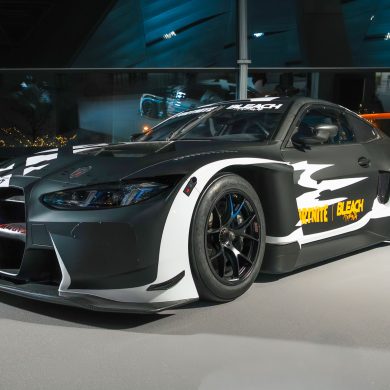Dale L. von Trebra, a motorsports photographer who documented more than 40 years of automobile racing in the United States, Canada, and Europe, died peacefully in his home, on February 12, in Santa Paula, CA. He was 86.
Dale Louis von Trebra was born on June 15, 1932, in Manhattan, KS. His mother, Grace Dorothy Schultz von Trebra owned farm holdings in the area while his father, Walter Henry von Trebra, was in business. In the late 1940s, they moved to southern California, settling in Santa Paula after buying the first of their Western Auto franchise stores. Even before graduating high school, von Trebra worked in each of the family’s stores after school days ended. Upon graduation he moved into full-time work and management.
While working in the family business, von Trebra discovered photography and mated it to his passion for automobiles in the early 1960s. He soon joined forces with Jack Brady Associates, photographing races throughout California. Friendships with drivers and fellow photographers expanded his horizons and, although he continued shooting in California, he left Brady Associates and began covering races across the U.S. He often left his home in late April in the first of his Porsche 356 coupes, heading to Indianapolis for the full month of May for testing, practices, and the 500-mile race. From there he went on to races east and north, typically not returning to California until the season-ending championships in Monterey and at Riverside in October.
He used 35-mm film—Tri-X black and white for decades and later Kodak Ektachrome for color—meticulously recording in his daily records the race location, date, film roll number, and sometimes-detailed notes of what he had caught. His reputation for crisp, interesting images with thorough caption information led to work with several U.S. magazines and even broader distribution in European publications. Starting in the mid-1980s he also covered European Grand Prix races and Le Mans. A recently updated computer inventory of his film images ran nearly 100 pages of film roll numbers, venues, and dates. He supported his records through programs, entry lists, and results sheets he diligently gathered at each race.
von Trebra was a relatively early adopter of digital cameras and auto-focus lenses, once commenting, “These things make my eyes 20 years younger!” Yet even into the 1990s he traveled to races across North America in the second of his Porsches, a 1964 356C coupe, always packed to the windowsills, for months on the road. That car expired with more than 400,000 miles on its odometer as he neared home and it retired to his garage. Later, he gifted it to a friend who perfectly restored it.

von Trebra enjoyed an enduring relationship with the Grand Prix of Long Beach, California, which honored him during the race weekend in 2014 for his 40 years service to their event. During this time he photographed their race—including making an iconic image of racer James Hunt in his car in the air over Mario Andretti and other racers at the start of the race in 1977—then transitioned into his final role in motorsports for which many knew him best: he managed the deadline pressroom for dozens of journalists, making certain they had everything they needed to file stories often on a minute-to-minute basis.
He was best known for the clarity and quality of his images and he became a destination for individuals painstakingly restoring historically significant racecars. Through this time, and because of his vast photo archive, he also supplied photos to several books and countless magazine stories.
Mr. von Trebra was a member and sometimes-board member of the American Racing Photographers Association, ARPA.
He was a modest man who understated the importance of his work and working style. He often said, ” I was just a photographer and I didn’t write. The drivers, the mechanics, the owners knew that. So they gave me access even while they talked about their strategy or their problems. I just shot pictures while they talked.”
His photographs are most valuable now because they show the secrets other people revealed behind the back of this humble, quiet photographer.










